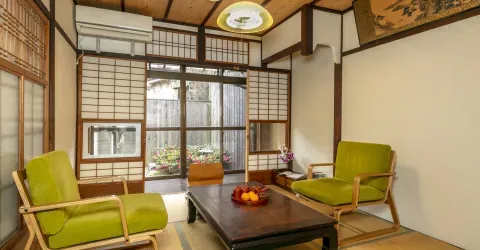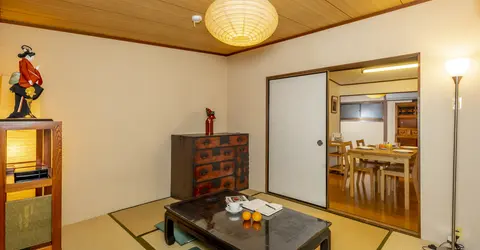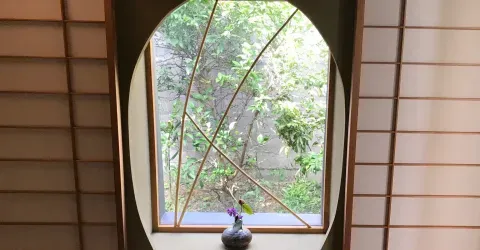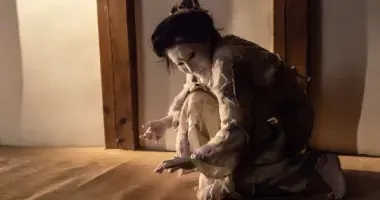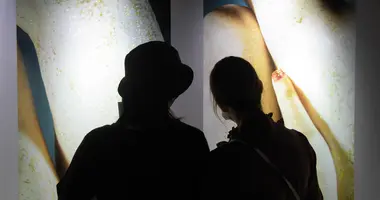Daimonji Festival Kyoto: A spectacular send-off for ancestral spirits
- Published on : 05/03/2024
- by : Japan Experience
- Youtube
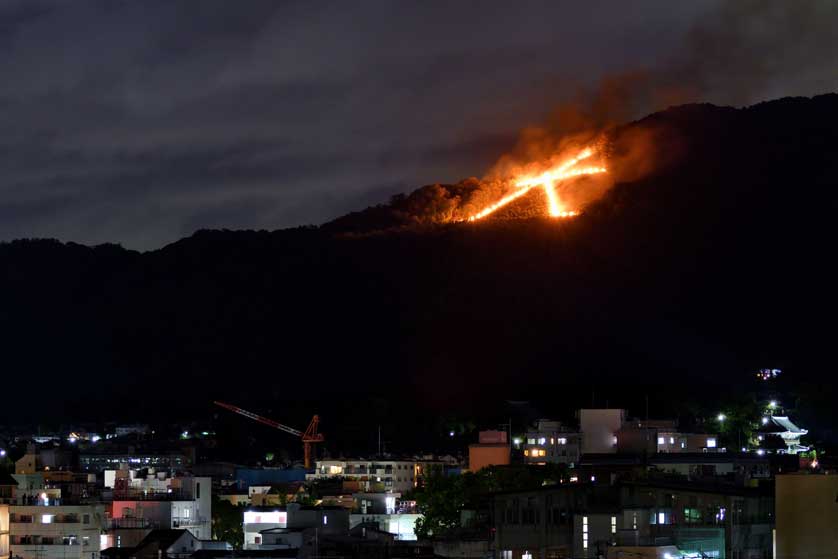
As the sun sets over Kyoto on August 16th, an extraordinary spectacle unfolds on the surrounding mountains. The Daimonji Festival, formally known as Gozan no Okuribi, illuminates the night sky with massive bonfires forming ancient characters and symbols. This centuries-old tradition marks the culmination of Obon, a period when ancestral spirits are believed to return to the mortal realm. Thousands gather to witness this awe-inspiring event, as the city bids farewell to its departed loved ones in a blaze of light and reverence. The Daimonji Festival is not merely a visual feast but a profound cultural experience that intertwines Buddhist beliefs, family bonds, and the cyclical nature of life and death.
The history and significance of the Daimonji Festival
The origins of the Daimonji Festival are shrouded in mystery, with some accounts tracing it back to the Muromachi or Edo periods (15th-17th centuries). This annual event serves as the grand finale of Obon, a Buddhist custom honoring ancestral spirits. During Obon, families welcome the souls of their ancestors back to the earthly realm, engaging in rituals such as grave cleaning, offering food, and spending time in remembrance.
The festival's formal name, Gozan no Okuribi, translates to "five mountain send-off fire," reflecting its purpose of guiding the spirits back to the afterlife. The massive bonfires, visible from across Kyoto, are believed to light the way for the departing souls. This practice exemplifies the Japanese concept of tsuizen, or memorial services for the dead, which play a crucial role in maintaining the connection between the living and their ancestors.
Over time, the Daimonji Festival has evolved into a symbol of Kyoto's cultural heritage, attracting both locals and tourists. It represents a unique fusion of religious observance, community tradition, and spectacular visual display, making it one of Japan's most iconic summer festivals.
Understanding the five bonfires: Shapes, meanings, and locations
The Daimonji Festival features five distinct bonfires, each with its own character or symbol, lit on different mountains surrounding Kyoto. These fires collectively form the Gozan no Okuribi:
1. Daimonji (大): The first and most famous bonfire, lit on Nyoigatake in the Higashiyama district. This enormous character, meaning "large" or "great," consists of three strokes measuring 80 meters, 160 meters, and 120 meters in length.
2. Myōhō (妙法): Lit on two adjacent mountains, Matsugasaki and Nishi-yama/Higashi-yama. These characters represent the "wondrous dharma" or Buddha's teachings. The Myō (妙) character is lit first, followed by Hō (法).
3. Funagata (舟形): This bonfire takes the shape of a boat and is lit on Nishigamo, Funa-yama. It measures an impressive 130 meters tall and 200 meters across.
4. Hidari Daimonji (左大文字): Another "large" character, located north of the Golden Pavilion on Daimonji-san.
5. Toriigata (鳥居形): The final bonfire, shaped like a torii (shrine gate), is lit on Mandara-san. It stands 76 meters high and 72 meters across.
Each of these bonfires holds symbolic significance in Buddhist and Shinto traditions. The boat-shaped Funagata, for instance, is thought to represent the vessel that carries souls across the cosmic river to the afterlife. The torii-shaped Toriigata symbolizes the gateway between the mortal world and the spirit realm.

The 大 of Daimonji Festival
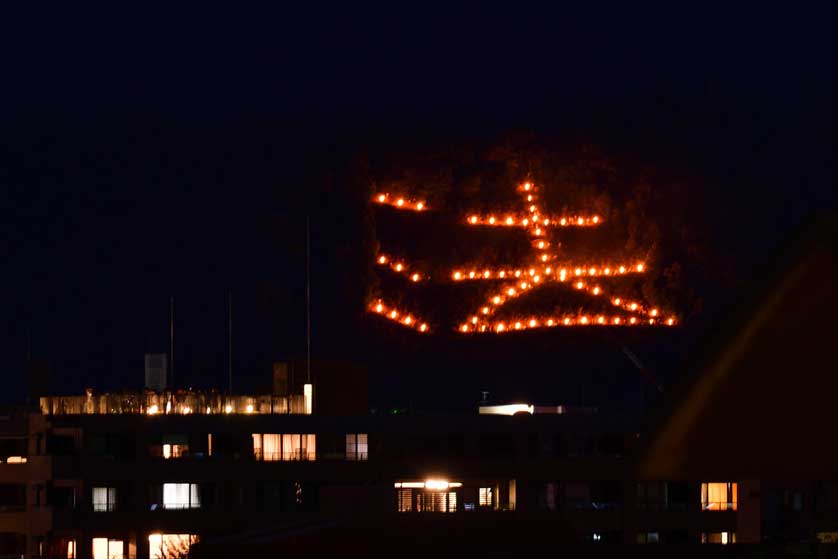
法 Daimonji Festival
Timing and schedule of the Gozan no Okuribi
The lighting of the bonfires follows a precise schedule, creating a mesmerizing sequence that unfolds over 30 minutes:
1. 8:00 PM - Daimonji (大) is lit on Nyoigatake
2. 8:05 PM - Myōhō (妙法) is illuminated on Matsugasaki and Nishi-yama/Higashi-yama
3. 8:10 PM - Funagata (舟形) takes shape on Nishigamo, Funa-yama
4. 8:15 PM - Hidari Daimonji (左大文字) blazes on Daimonji-san
5. 8:20 PM - Toriigata (鳥居形) completes the spectacle on Mandara-san
Each bonfire burns for approximately 30 minutes, creating a window of time around 8:30 PM when all five are visible simultaneously. This moment is considered the pinnacle of the festival, offering a breathtaking panorama of fire and symbolism across Kyoto's skyline.
The timing of the festival is deeply rooted in Buddhist beliefs about the journey of souls. It's thought that the fires guide the spirits back to the afterlife, ensuring they don't linger in the mortal realm. The gradual lighting of each bonfire symbolizes the souls' progression on their return journey.
Best viewing spots to experience the Daimonji Festival
To fully appreciate the Daimonji Festival, choosing the right viewing location is crucial. Here are some of the best spots to witness this spectacular event:
1. Kamo River Banks: The eastern bank of the Kamo River, near Imadegawa Bridge, offers an excellent view of the Daimonji character. Thousands gather here, creating a festive atmosphere as people sit on blankets, enjoying food and drinks while waiting for the show.
2. Funaokayama Park: Located at the highest point of the park, this spot provides a panoramic view of four out of the five bonfires (excluding the Toriigata). It's a popular choice for those wanting to see multiple fires without changing location.
3. Kitayama Street: For viewing the Myōhō characters, head to Kitayama Street near Notre Dame Elementary School. The banks of the Takano River, north of Takano Bridge, also offer good views of these fires.
4. Nishioji Street: This is an ideal location for watching the Hidari Daimonji, particularly the stretch between Shijo and the Kinkakuji area.
5. High-rise buildings and hotels: Many downtown hotels and restaurants offer special "Daimonji viewing packages" on their top floors. These provide comfortable settings to see all five fires, though they often come at a premium price.
6. Kyoto University Campus: The hillside campus offers a unique vantage point for viewing the Daimonji fire, being situated close to Nyoigatake.
For the most immersive experience, consider joining the crowds along the Kamo River. While you may only see the Daimonji fire from here, the atmosphere is unparalleled, with people of all ages gathered in yukata (summer kimono), creating a truly authentic festival feel.

Mount Daimonji, Kyoto
Cultural traditions and superstitions associated with the festival
The Daimonji Festival is steeped in rich cultural traditions and fascinating superstitions. These practices add depth to the event, reflecting the intricate relationship between the living and the dead in Japanese culture:
1. Gomagi: In the days leading up to the festival, people write prayers on small wooden tablets called gomagi. These are collected at various temples associated with each bonfire and are burned as part of the fire, believed to carry wishes and messages to the ancestral spirits.
2. Sake reflection: There's a belief that drinking sake or water in which the burning bonfires are reflected can protect one from illness, particularly paralysis. This practice highlights the perceived protective power of the festival fires.
3. Ancestor offerings: During Obon, families set up altars in their homes with offerings of food, drink, and flowers for their ancestral spirits. The Daimonji fires are seen as the final act of hospitality, guiding these spirits back to their realm.
4. Fire preservation: Some families take home embers from the bonfires, believing they bring good fortune. These are sometimes mixed with tea and consumed for health benefits.
5. Smoke divination: The direction of the smoke from the fires is thought to predict the coming year's fortunes. Smoke drifting towards the city is considered a good omen.
These traditions underscore the festival's role not just as a spectacle, but as a deeply meaningful spiritual and cultural event. They provide a tangible connection to ancestral spirits and reinforce the cycle of life, death, and rebirth central to Buddhist philosophy.
Preparing for your Daimonji Festival experience in Kyoto
To make the most of your Daimonji Festival experience, consider the following tips:
1. Arrive early: Popular viewing spots fill up quickly. Aim to secure your spot at least 2-3 hours before the first lighting at 8:00 PM.
2. Bring essentials: Pack a picnic blanket, snacks, drinks, and a fan. August in Kyoto can be hot and humid, even at night.
3. Dress appropriately: Consider wearing a yukata for a more authentic experience. If not, opt for light, comfortable clothing.
4. Respect local customs: Remember that this is a religious event. Be mindful of your behavior and avoid loud or disruptive activities.
5. Learn some background: Familiarize yourself with the festival's history and significance. Books on Japanese Festivals can provide valuable context.
6. Plan your transport: Public transportation gets crowded. Consider walking or cycling if possible, or plan to leave ample time for your journey.
7. Stay for the aftermath: The atmosphere after the fires have burned out is unique, with a sense of collective reflection and peace.
The Daimonji Festival offers a profound glimpse into Japanese culture, spirituality, and community. By immersing yourself in this ancient tradition, you'll gain a deeper appreciation for the intricate ties between the living and the dead in Japanese society. As you watch the mountains blaze with ancient symbols, remember that you're not just witnessing a spectacular show, but participating in a centuries-old ritual of remembrance and renewal.
